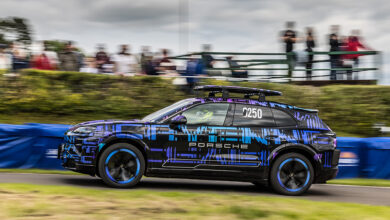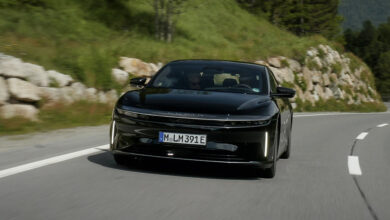J.D. Power Releases 2024 U.S. Electric Vehicle Experience Study
Factors like quality & cost of ownership are important, but charging infrastructure is lacking...
According to the J.D. Power 2024 U.S. Electric Vehicle Experience Study, as more buyers make the switch to battery electric vehicles (BEVs), traditional factors are critical to BEV satisfaction.
Quality and cost of ownership have emerged as the top factors influencing satisfaction.
The study reveals that public charger availability not only remains the least satisfying aspect of owning a BEV, but also that the experience has become notably worse.
The BMW i4 ranks highest overall, while the MINI Cooper Electric is the highest-ranking mass market BEV for a second consecutive year. Both models rank highest in their respective segments on the strength of their performance in the vehicle quality and reliability factor.
“The increase in the EV share of the new-vehicle market, reflected by seven new models this year, is a notable step toward electrification,” said Brent Gruber, executive director of the EV practice at J.D. Power. “Many products are hitting the mark but, the decline in satisfaction with public charging availability should serve as a warning. Concern about access to public charging is a key reason many buyers currently reject BEVs.”
Following are key findings of the 2024 study:
- Public charging is getting worse: Among mass market BEV owners, satisfaction with public charger availability is 32 points lower than a year ago.
- Mass market BEVs deliver higher quality than premium BEVs: Owners of mass market brand BEVs experience fewer problems with their vehicle than do owners of premium BEVs. Eleven of the 14 ranked mass market models outperform the premium brand market average in total problems.
- First-time BEV owners are less satisfied than BEV veterans: Overall satisfaction among first-time BEV owners has declined 16 points from 2023. Battery range and public charging availability are the two factors in which the gap between previous BEV owners and new owners is greatest.
- Most BEV owners say they’ll consider a BEV again, but first-time BEV owners may be more fickle: First-time BEV owners say they are open to considering non-BEVs in the future. However, almost half (48%) say they will consider a plug-in hybrid vehicle (PHEV) and 39% say they are willing to consider hybrid or internal combustion engine (ICE) vehicles. Meanwhile, 38% of previous BEV owners say they are willing to consider a PHEV and only 19% would consider a hybrid or ICE vehicle for their next purchase.
- PHEVs might not present a good alternative to BEVs: Recently, news reports have suggested that plug-in hybrid vehicles could solve many of the issues plaguing BEVs, such as range limitations and lack of public charging availability. Overall satisfaction with PHEVs is 629, while mass market BEVs (718) and premium BEVs (750) score much higher.
BMW i4 ranks highest overall and highest in the premium BEV segment with a score of 800. Rivian R1T (789) ranks second and Rivian R1S (778) ranks third.
MINI Cooper Electric ranks highest in the mass market BEV segment for a second consecutive year, with a score of 770. Ford Mustang Mach-E (764) ranks second and Hyundai IONIQ 6 (759) ranks third.
The number of award-eligible models in the premium segment has grown from five to eight year over year. Award-eligible mass market models have increased from 10 to 14. Satisfaction among owners of premium EVs averages 750, while satisfaction among mass market EV owners averages 718.
The U.S. Electric Vehicle Experience (EVX) Ownership Study, focuses on the crucial first year of ownership. The index score measures electric vehicle owner satisfaction in both premium and mass market segments.
The 2024 study includes 10 factors (in alphabetical order): accuracy of stated battery range; availability of public charging stations; battery range; cost of ownership; driving enjoyment; ease of charging at home; interior and exterior styling; safety and technology features; service experience; and vehicle quality and reliability.



